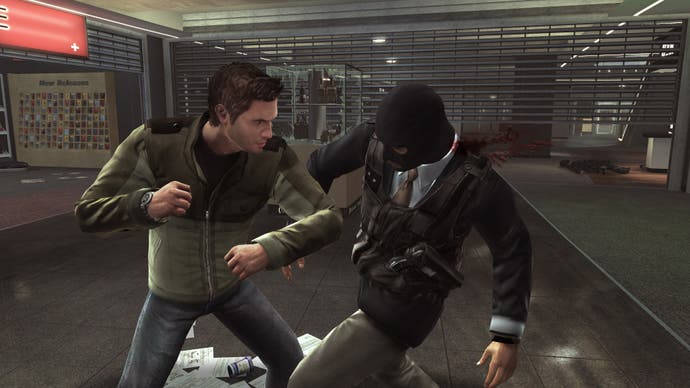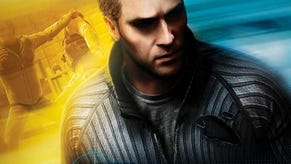Robert Ludlum's The Bourne Conspiracy
You're a malfunctioning 30-million-dollar weapon.
Being Jason Bourne may look glamorous, but in reality it's probably not. Yes, you get to bring down the silly old CIA using rusty old cars and biros and then go and live on a beach with Franka Potente, but you also have to remember numbers, sleep rough, wipe down hotel rooms and put up with headaches. We'd still rather own a Velcro patent or get a discount at Thresher. Fortunately High Moon Studios thought of that and so Bourne Conspiracy is about doing all the cool things in Robert Ludlum's books and the Matt Damon films, and in some respects it does them well.
There's the nucleus of a fun game in Bourne's hand-to-hand skills, for instance. You have two attack buttons, which allow you to perform a range of basic combos, and as long as you remember to block when the other guy hits back you can quickly build up "adrenaline" and do Bourne's signature takedowns: slick, violent finishing moves that smash goons into the wall and elbow them in the head as they bounce away, or crush their windpipes and crack their knees in one fluid motion.
The fighting snaps the dynamic camera to the side so you can see what's going on, but otherwise we're in third-person shooter territory, running around docks, embassies, yachts and airports ducking behind cover and shooting people with pistols, shotguns and assault rifles. Bourne's super-assassin intuition is replicated by a "Bourne Instinct" button that feeds waypoints to a mini-map and lights up enemies, helpfully guiding your gun-sight to them, although leaving you to adjust the aiming rather than locking on. Aiming is awkward and movement is ungainly, with too many controls to worry about on the first couple of levels, but you get into a tolerable rhythm.
The other major gameplay element is quick-time events, where you hit a face button as prompted on-screen during what's otherwise an in-game cut-scene. The way they're implemented is sensible - you're shown a button layout with the correct response highlighted, rather than just being shown the button on its own, and this makes it easier to react - and they improve a few sequences. One - a long-range rifle assassination in a university - is actually a high point in the game as a whole, as Bourne coolly guides his sights through the chaos on the ground, picking off bodyguards and moving targets as if he's that lanky sniper in the bell-tower out of Saving Private Ryan. All of this is seamlessly integrated with the other elements.

As we all know, there are three Bourne films at this point, but Conspiracy focuses on the first story, Identity, in which Jason Bourne has to work out who he is and kill off the people coming after him. To this end High Moon also recreates a lot of the key action sequences: escaping the US embassy in Zurich, the fight with another CIA assassin in a Paris apartment, the car chase, and so on. These are quite compact levels, rarely drawn out in the way that adaptations tend to be. The CG cut-scenes agree with Doug Liman's film direction and camera angles, and the wardrobe department and set designers, and even the music, although it's subtly different here.
The main difference is Bourne himself, because Matt Damon decided not to get involved, but where the game willingly goes its own way is in flashback levels, which dramatise the run-up to the botched assassination attempt on Nykwana Wombosi off the French coast that got Bourne into trouble in the first place, and show you a few of the CIA's other hits, like a war criminal who runs riot in a Swiss airport with an army of hooded terrorists.









